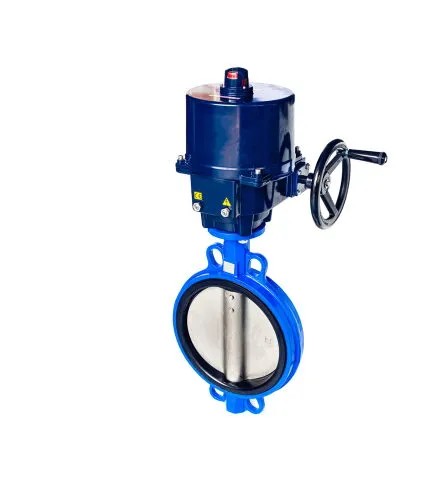


Understanding Pneumatic Ball Valves: Operation, Installation, and Maintenance
Introduction
We are a leading control valve manufacturer in China, delivering high-performance valves and control actuators engineered to meet a wide range of industrial applications.
Pneumatic ball valves are critical components in fluid and gas control systems, offering reliable performance in regulating the flow of liquids and gases. These valves use a rotating ball mechanism to control fluid flow, and when integrated with pneumatic actuators, they provide efficient and cost-effective solutions for industrial applications. The combination of ease of use, high reliability, and quick response makes pneumatic ball valves a preferred choice in many industries.
What is a Pneumatic Ball Valve?
A pneumatic ball valve consists of two main components: the ball valve itself and the pneumatic actuator. The ball valve contains a spherical ball with a hole (bore) that aligns with the flow path when open, allowing fluids to pass through. When the valve is closed, the ball rotates 90 degrees, blocking the flow. The pneumatic actuator uses compressed air to rotate the ball, either via a single-acting or double-acting mechanism.
Single-Acting Actuator: Moves the ball in one direction and uses a spring to return the valve to its default position.
Double-Acting Actuator: Uses compressed air to move the ball in both directions, offering more control over flow.
Pneumatic ball valves are often favored for their quick response times and cost-effectiveness, especially in large applications, and they are well-suited for high-pressure and high-temperature environments.
Components of Pneumatic Ball Valves
Pneumatic Actuator: Converts compressed air into mechanical motion to control the valve’s position. Actuators are mounted using the ISO 5211 flange standard for easy interchangeability.
Ball Valve: The ball rotates to control fluid flow. When open, the hole in the ball aligns with the pipe; when closed, it blocks the flow.
ISO 5211 Flange: Ensures proper connection between the actuator and valve.
Seals and Springs: Maintain the integrity of the valve, ensuring tight sealing and proper return functionality.
Connection Methods of Pneumatic Ball Valves
Flanged: Offers secure and removable joints for easy installation and maintenance.
Threaded: Ideal for smaller systems, offering leak-proof seals and easy connections.
Tri-Clamp: Common in sanitary applications, providing a hygienic connection.
Wafer Type: Mounted between flanges for compactness and cost-effectiveness.
Welded: Provides a permanent and leak-free connection, suitable for high-pressure applications.
How Pneumatic Ball Valves Work
When compressed air is supplied to the actuator, it rotates the ball valve. The ball aligns with the flow path in the open position, allowing fluid to pass. In the closed position, the ball rotates 90 degrees, blocking the flow. This simple operation ensures reliability and efficiency in a wide range of applications, including water treatment and chemical processing.
Installation and Maintenance Considerations
Environment and Safety: Ensure the valve components can withstand the operating conditions, including pressure, temperature, and the type of fluid.
Compatibility: Verify that the actuator and valve are rated for the system’s pressure and temperature.
Maintenance: Regular inspections for wear, leaks, and lubrication are essential to ensure smooth operation. Ensure the air supply is clean and dry, as contaminants can damage the actuator.
Conclusion
Pneumatic ball valves are vital for fluid and gas control in many industries, offering durability, efficiency, and cost-effectiveness. Understanding their components, operation, and maintenance needs can help ensure long-term, trouble-free performance. With proper installation and regular maintenance, these valves can deliver reliable service, improving system efficiency and safety.Know more about Google SEO Directory
